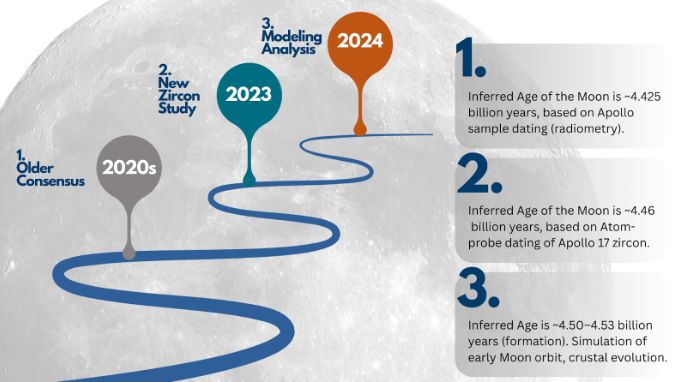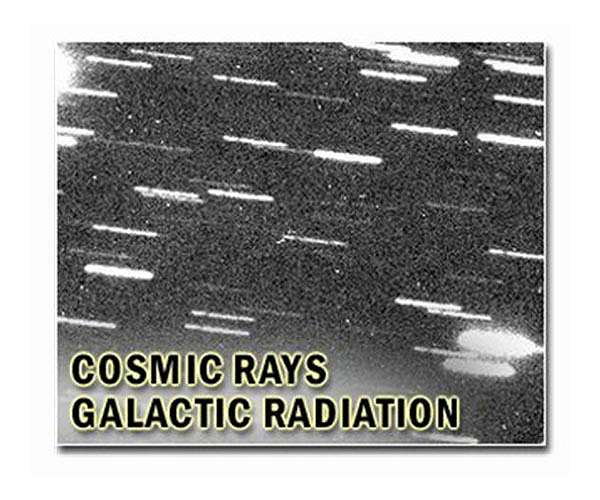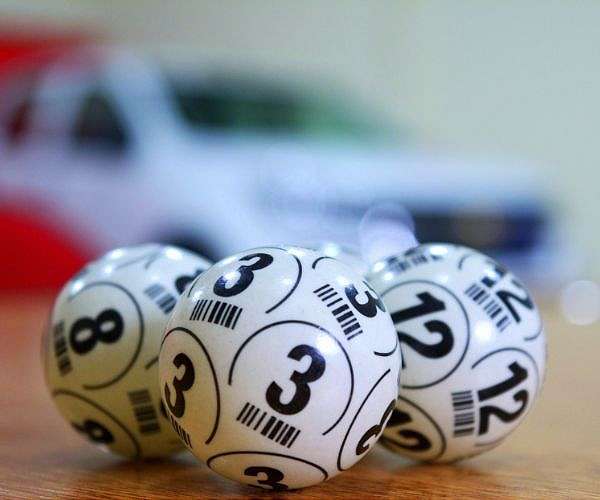The Moon Lives On in Pop Culture – But Science Now Questions Its Youth
by Clarence Oxford
Los Angeles CA (SPX) Jun 15, 2025
For decades, scientists have thought that the Moon formed around 4.4 to 4.5 billion years ago, likely in the aftermath of a titanic collision between a young Earth and a Mars-sized object (the famous giant impact hypothesis). However, exactly when that lunar birth happened has remained tricky to pin down. In fact, modern science is now questioning the Moon’s “youth” – suggesting our lunar companion may be even older than previously believed.
Cultural Presence is Growing
The Moon’s mystique isn’t confined to science – it’s deeply woven into pop culture as well. We see the Moon’s influence in movies, music, folklore, and even video games. One striking example is the popularity of moon-themed games in the booming online gaming industry. There are so many examples, but one of the games called “Moon Sisters,” is very typical and shows how lunar imagery and legends engage players nowadays.
The slot game of the Joe Fortune platform has symbols like butterflies, lotus flowers, and classic playing-card icons. Importantly, lunar symbolism takes center stage: a Koi Fish acts as a wild symbol (an auspicious icon substituting for other symbols), and shining Moon Bonus symbols trigger special rewards. For instance, landing six or more Moon symbols launches a bonus round of re-spins, with each new Moon sticking on the reels and resetting the re-spin count. This gameplay – promising payouts that leave players “over the moon” – demonstrates how the Moon’s image evokes excitement and wonder.
Why theme a game around the Moon? Partly because the Moon carries rich cultural associations. It signifies mystery, romance, and luck in many cultures – feelings that game designers harness to captivate an audience. The very phrase “over the moon” (meaning extremely happy) shows how ingrained lunar imagery is in our language. By drawing on the Moon’s enduring allure, pop culture products like Moon Sisters resonate with people’s imaginations. In a broader sense, this reflects how deeply the Moon lives on in modern culture.
Is the Moon Older Than We Thought?
Using state-of-the-art atom-probe tomography techniques, a 2023 research team measured the decay of uranium to lead inside these minuscule crystals to determine their ages. The results stunned researchers: one lunar zircon crystal revealed an age of about 4.46 billion years. That’s roughly 40 million years older than earlier estimates had put the Moon’s age (previously thought to be ~4.42 billion years).
Such evidence has prompted scientists to recalibrate the lunar timeline. “You can’t necessarily use the ages recorded by rocks to tell when the Moon formed,” notes Francis Nimmo, a planetary scientist leading one recent study. In other words, the ages of surface rocks (even very old ones) don’t always reveal the true formation date. That’s because the Moon’s surface has been through a lot of turmoil that can erase or reset geological clocks. Many lunar rocks brought back by Apollo turned out to be about 4.35 billion years old – younger than those super-old zircons. Why the discrepancy? Scientists now suspect that after the Moon initially formed, a dramatic event “remelted” large portions of its crust around 4.35 billion years ago.
To summarize some key findings about the Moon’s age, consider the following timeline of scientific estimates:

These findings answer the title’s question: modern science indeed questions the Moon’s youth by indicating the Moon is older than we thought. Far from being a late addition to the Solar System, the Moon may have been around almost since the beginning – a venerable elder, not a young sibling of Earth.
Lunar Exploration and Ongoing Mysteries
Despite these advances, scientists still have many questions about the Moon’s early days – and new missions are on the horizon to help answer them. Each discovery seems to raise fresh puzzles. To dig deeper (sometimes literally), space agencies around the world are gearing up for the next phase of lunar exploration.
NASA’s Artemis program is poised to return humans to the Moon and gather new samples from regions never visited before – including the Moon’s South Pole. By analyzing these samples with today’s ultra-sensitive instruments, scientists hope to refine the Moon’s age estimate even further and perhaps catch traces of those primordial events. Notably, NASA recently opened a 50-year-old sealed Apollo sample that had been saved for this very moment – a practice run to ensure we can maximize science from Artemis sample returns.
Besides bringing back samples, orbiters and rovers are helping us learn more about the Moon. Today’s lunar orbiters can study what the surface is made of and even look inside the Moon using gravity data, giving clues about how it formed. At the same time, scientists are running more advanced simulations of what the early Earth-Moon system was like. Each new piece of data – whether it’s an exact rock age or a detailed gravity map – helps us better understand how the Moon changed over time, from a hot, molten ball to the cratered surface we see now.
Related Links



